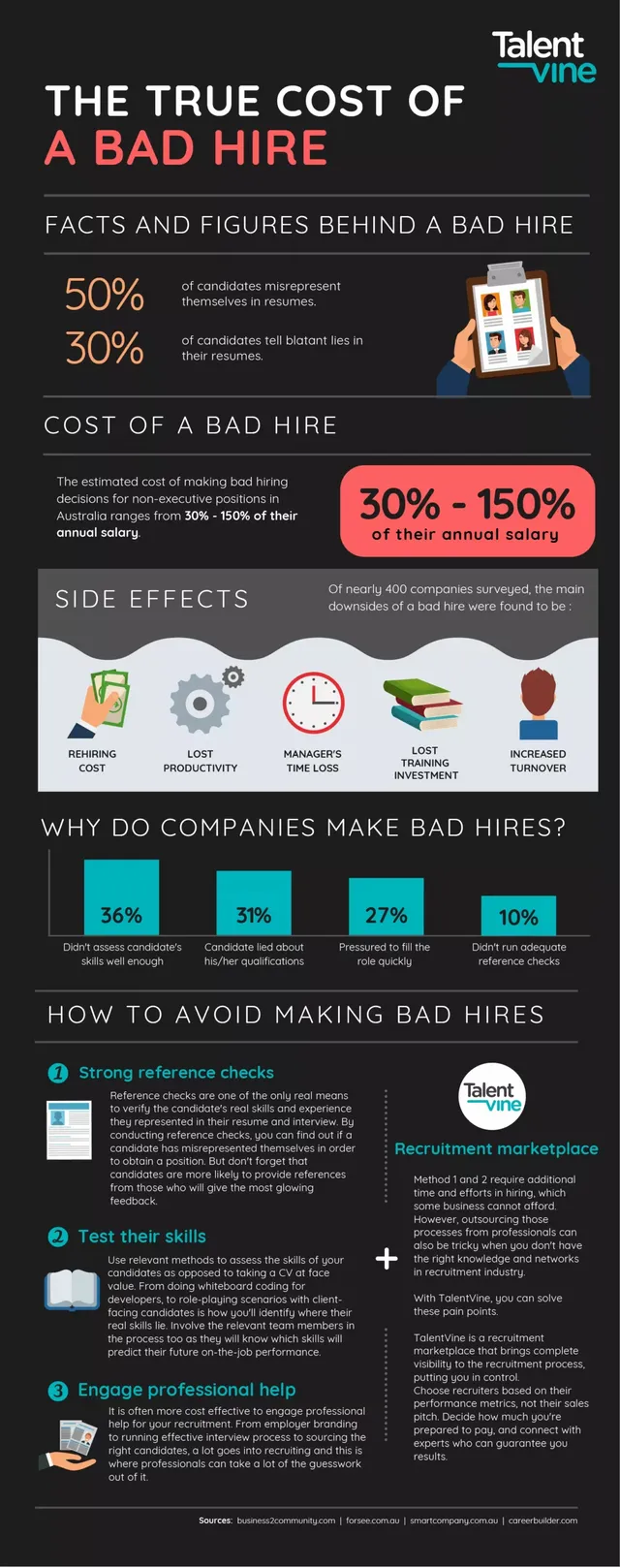How much time should I spend looking for new talent? How often should I look for new talent? What metrics should I track? These questions are important because they affect the success or failure of your recruitment strategy. Learn more: https://blog.hirenest.com/recruitment-kpis-talent-acquisition-metrics/

Recruitment has become a critical part of every organization’s growth plan. The ability to attract top candidates is crucial to the success of your company. In order to get the best candidates, you need to hire the right person at the right time.
To ensure that you are hiring the right candidate, you need to know exactly who you want to hire and why. This means that you need to have clear goals and objectives for each position. Once you have these goals, then you can start tracking them using specific metrics.
There are many different ways to measure performance. For example, you could measure employee engagement by asking employees what they think about working here. Or you might ask managers what they think about their team members. Another way to measure employee engagement would be to ask employees directly. If you do this, however, it’s important to keep in mind that people tend to answer differently depending on whether they feel comfortable answering honestly. You can find out more in our article: https://blog.hirenest.com/recruitment-kpis-talent-acquisition-metrics/

It’s important to understand that the goal of any recruiting process is not just to find great talent but to identify the right fit between the job requirements and the skills and personality traits of the candidate. A bad match will lead to poor results. As a recruiter, you need to know which metrics matter most to your business. Some companies focus only on salary, others on experience, and some on education level. But if you don’t know what matters most to your business, you won’t be able to determine which metrics to track.
What metrics do recruiters use?
The most common metric used by recruiters is “job title match rate.” This means they look at how many resumes contain the job title and then compare it to the number of people who applied for the role. If the ratio is high enough, the recruiter will assume the candidate has the skills needed for the role.
While this may seem like a simple way to evaluate candidates, it doesn’t take into consideration whether the person applying actually has the skills required for the role. It also assumes that all applicants have equal access to the same information. In reality, some applicants may have better networks than others, which could give them an advantage.

Another popular metric is the “fit score.” This is based on a combination of factors including salary requirements, location preferences, and work hours. Fit scores are often calculated using software programs that rank candidates based on their compatibility with the company culture. Companies typically don’t share fit scores publicly because they want to keep salaries competitive. The problem with these metrics is that they only measure one aspect of a candidate’s ability to succeed in a particular role. They don’t consider things like experience, personality traits, or leadership abilities.
Importance of Talent Acquisition Metrics
The most important talent acquisition metrics are those that measure the success of the process itself (e.g., cost per hire). Other metrics include the quality of candidates who were hired, the number of hires made, the average tenure of new employees, and the percentage of hires that remain employed after one year.
How to Measure Successful Hiring Processes. The best way to measure successful hiring processes is by using a combination of qualitative and quantitative measures. Qualitative measures include interviews, reference checks, and behavioral assessments. Quantitative measures include salary surveys, performance reviews, and employee satisfaction surveys.
Top recruiting metrics for 2022
How do you measure success in recruitment? What are the key indicators that recruiters should look out for in order to ensure their company remains competitive?
To succeed in recruitment, organizations need to adopt a data-driven approach. This means they need to collect accurate information about candidates and employees, analyze them regularly, and take action accordingly. In this article, we share some of the top metrics that recruiters should consider.The most important metric for any recruiter is whether they can find talent. If not, then it doesn’t matter what else they do. Recruiters who focus on building relationships with potential candidates will always outperform those who don’t.

In order to build strong relationships with top talent, recruiters must first understand the needs of the company. They should know the culture, values, and mission of the organization. This includes understanding the role of each team member within the business. It’s also important to understand the challenges faced by the company, including its competitors and industry trends.
The best way to attract new customers is through referrals. People trust recommendations from friends and family, so if you want to increase sales, you need to encourage people to recommend your products and services. There are many ways to generate referrals, but one of the easiest is to offer rewards programs. For example, you could give away free samples or coupons to customers who refer others.
A lot of companies are using AI to improve customer service. Chatbots are already being used to answer basic questions like “How much does shipping cost?” and “What is the return policy?” But chatbots aren’t just limited to answering simple queries. Companies are now developing bots that can handle complex issues, such as insurance claims. These bots are able to process large amounts of data quickly, which makes them ideal for handling complicated situations.
Conclusion
In order to drive more qualified candidates into your organization, you need to understand what type of talent you're looking for. This requires understanding the metrics that matter most to recruiters. These include candidate volume, quality, pipeline velocity, and cost per hire. By measuring each of these metrics, you'll gain insight into where you stand against competitors and identify areas for improvement.
The first step is to determine which metrics matter most to your company. Once you've identified those metrics, it's important to measure them regularly so you know whether they're improving or getting worse. If you're not tracking any key performance indicators (KPIs), you won't know if you're making progress toward your goals. To start, you should set KPIs based on your business objectives. For example, if you want to increase sales by 10 percent this year, then you might set a goal of increasing revenue by $10 million. Next, you'll need to figure out how to track your KPIs. There are many ways to do this, but one of the easiest is through Google Analytics. If you want to know more about 5 Important Recruitment KPIs And Talent Acquisition Metrics You Need to Know, read this article: https://blog.hirenest.com/recruitment-kpis-talent-acquisition-metrics/